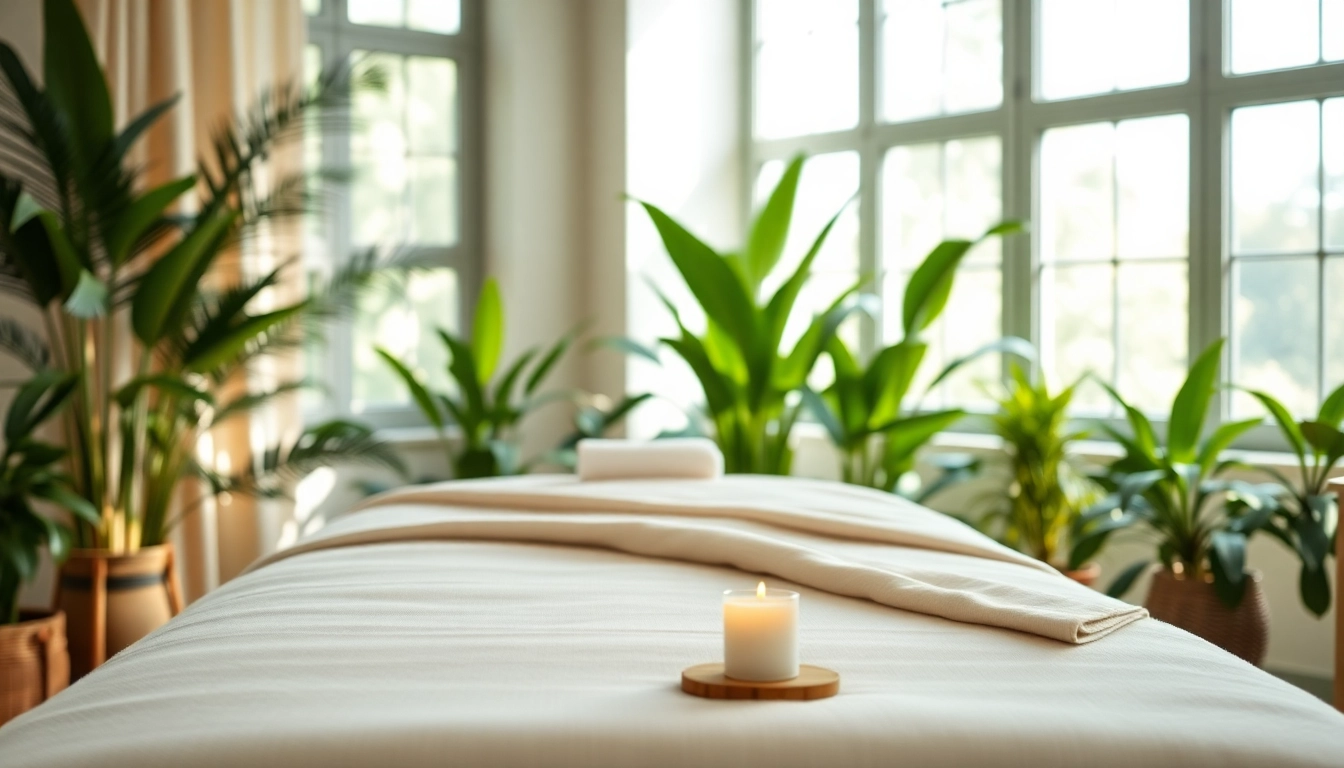Understanding Whole Body Vibration Therapy
Whole Body Vibration Therapy (WBV) is gaining traction as a functional and versatile approach to improving overall health and wellness. This innovative method involves standing, sitting, or lying on a machine equipped with a vibrating platform that transmits energy throughout the body. As the platform vibrates, muscles respond by contracting and relaxing multiple times per second, simulating a workout effect without the need for extensive physical exertion. Studies highlight that incorporating whole body vibration therapy can enhance muscular strength, improve circulation, and even positively influence mental health. This article delves into the mechanics, benefits, safety, and application of WBV therapy.
What is Whole Body Vibration Therapy?
Whole Body Vibration Therapy is a treatment method where users are exposed to mechanical vibrations. These vibrations can be transmitted to the body in various frequencies and amplitudes, depending on the specific equipment used. The fundamental principle behind WBV therapy is that the vibrations stimulate muscle contractions, resulting in increased muscle engagement and potential health benefits without the standard physical strain associated with traditional fitness routines.
How Does Whole Body Vibration Therapy Work?
The mechanics of whole body vibration therapy involve a machine that generates vibrations through its base. When an individual stands, sits, or lies on this platform, the vibrations pass through the body, engaging muscles reflexively. This response occurs because the body perceives the vibrations as a destabilizing force, compelling muscles to stabilize and adjust accordingly. As such, users can achieve various physiological benefits even at lower intensity levels compared to traditional exercises.
Key Components of Whole Body Vibration Therapy
- Vibrating Platform: This device is the cornerstone of WBV therapy, providing the mechanical stimulation necessary for muscle engagement.
- Frequency and Amplitude Settings: Adjustments can be made to tailor the intensity of the vibrations based on individual fitness levels and therapeutic goals.
- Safety Features: Quality machines often include safety measures to prevent excessive vibration exposure and ensure user comfort.
- Guidance from Professionals: Effective WBV therapy usually involves sessions supervised by trained personnel to ensure safety and proper technique.
Health Benefits of Whole Body Vibration Therapy
Physical Fitness Improvements with Whole Body Vibration Therapy
Whole body vibration therapy has been associated with several significant physical fitness enhancements. Research shows that regular use can lead to improvements in muscle strength, flexibility, and overall fitness levels. Here’s how:
- Muscle Strength: Studies indicate that WBV can enhance muscle strength by stimulating fast-twitch muscle fibers, contributing to strength gains similar to those achieved through traditional resistance training.
- Bone Density: It may help in enhancing bone mineral density by promoting osteogenic activities, making it beneficial for individuals at risk of osteoporosis.
- Weight Loss: The calorie-burning effect of WBV, combined with dietary changes, can support weight loss efforts and improve body composition.
- Enhanced Circulation: Vibration therapy may enhance blood flow, which aids in nutrient delivery and waste removal from muscle tissue.
Mental Health Benefits Associated with Whole Body Vibration Therapy
Beyond physical health, whole body vibration therapy offers notable mental health advantages. The vibrating motion can create a soothing effect, leading to reduced stress and anxiety levels. Some studies suggest that WBV can also:
- Boost Mood: The mechanical vibrations may stimulate the release of endorphins, helping to alleviate symptoms of depression and improve mood overall.
- Enhance Cognitive Function: Emerging research indicates that vibration therapy may positively influence cognitive functions, particularly in elderly populations.
Comparative Analysis with Traditional Exercise Methods
While traditional exercise regimens are invaluable for fitness, whole body vibration therapy presents a complementary approach. Notably:
- Time Efficiency: WBV requires considerably less time than typical workouts, making it a viable option for individuals with busy schedules.
- Low Impact: For those with joint issues or physical limitations, WBV offers a method to engage in exercise without the high-impact strain that can accompany traditional workouts.
- Increased Engagement: The stimulation of muscles during WBV can create a unique experience that may encourage consistency and adherence to a fitness routine.
Safety and Considerations for Whole Body Vibration Therapy
Recognizing Risks of Whole Body Vibration Therapy
While whole body vibration therapy offers various benefits, it is essential to recognize potential risks. Improper use or specific health conditions can exacerbate issues such as:
- Joint or Muscle Pain: Individuals with existing musculoskeletal conditions may experience heightened discomfort.
- Balance Issues: Those with poor balance may be at risk for falls while using vibration platforms.
- Cardiovascular Concerns: Certain individuals with heart conditions should consult healthcare providers before commencing WBV classes.
Who Should Avoid Whole Body Vibration Therapy?
 Whole body vibration therapy is generally safe, but certain populations should avoid it or seek medical advice before starting:
- Pregnant individuals
- People with recent surgeries or serious injuries
- Individuals with severe cardiovascular disorders
- Those with uncontrolled hypertension
Guidelines for First-Time Users of Whole Body Vibration Therapy
For those considering whole body vibration therapy, adhering to safety guidelines ensures a positive experience:
- Consult a Healthcare Provider: Before starting, consult with a healthcare professional, particularly if you have existing health concerns.
- Start Slowly: Gradually familiarize yourself with the equipment; beginning with shorter sessions can help build tolerance.
- Listen to Your Body: Pay attention to how your body responds to the vibrations and modify time or intensity as necessary.
Incorporating Whole Body Vibration Therapy into Your Routine
Recommended Frequencies and Duration for Whole Body Vibration Therapy
Establishing effective WBV routines involves understanding the best practices regarding duration and frequency:
- Session Durations: Typical sessions range from 10 to 30 minutes, depending on individual tolerance and therapeutic goals.
- Frequency Recommendations: Recommendations typically suggest 2-3 sessions per week to observe benefits while allowing the body to recover.
Combining Whole Body Vibration Therapy with Other Fitness Regimens
Integrating whole body vibration therapy into existing fitness routines can enhance results. Consider the following:
- Complementary Exercises: Pair WBV with resistance training, yoga, or stretching for a balanced approach to fitness.
- Active Recovery: After high-intensity workouts, using WBV can facilitate recovery by increasing blood flow and reducing muscle soreness.
Monitoring Progress with Whole Body Vibration Therapy
Tracking progress is crucial for maximizing the effectiveness of whole body vibration therapy:
- Set Clear Goals: Establish specific, measurable goals such as increased strength or improved flexibility.
- Record Sessions: Maintain a log of sessions, including duration, frequency, and personal feelings during and after use.
- Adjust as Needed: Regularly evaluate progress and adjust session durations, frequencies, and additional practices to meet evolving fitness goals.
Future Trends in Whole Body Vibration Therapy
Innovations in Whole Body Vibration Therapy Technology
The field of whole body vibration therapy continues to evolve, with continuous advancements in technology leading to improved user experiences and outcomes. Innovations include:
- Smart Technology Integration: Equipment that tracks user performance and provides data-driven feedback to optimize therapy sessions.
- Ergonomic Designs: Developing platforms that adapt to users’ body types and physical conditions for enhanced safety and effectiveness.
Research Developments Surrounding Whole Body Vibration Therapy
Recent studies contribute to a better understanding of the benefits and limitations of whole body vibration therapy. Ongoing research focuses on:
- Identifying optimal frequencies for specific therapeutic outcomes.
- Examining long-term effects of WBV on various health conditions, including osteoporosis, obesity, and mental health disorders.
Predictions for Whole Body Vibration Therapy in Wellness Treatment
The future of whole body vibration therapy appears promising as more individuals recognize its potential. Predictions for the coming years include:
- Increased accessibility in fitness centers and rehabilitation facilities.
- A broader acceptance among health professionals as a complementary treatment for various ailments.
- Integration into wellness programs addressing not just physical but also mental health challenges.



